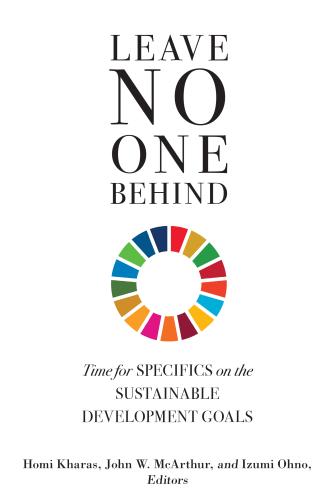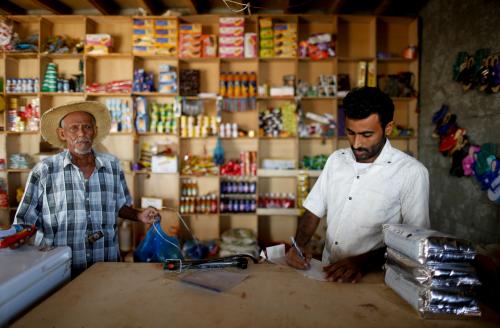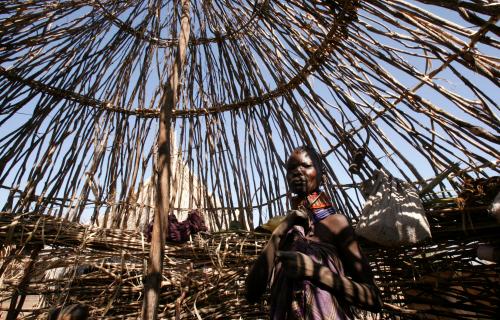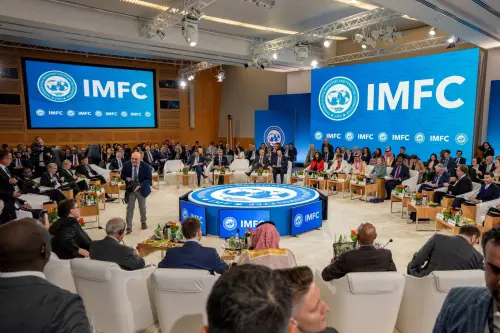Extreme poverty has risen sharply due to the economic turmoil caused by COVID-19. After decades of progress in international development, up to 150 million people now face a return to severe destitution.
Even before the pandemic crisis, progress on poverty eradication was slowing globally. While extreme poverty rates fell an average of 1 percentage point per year from 1990 to 2015, new data shows that extreme poverty decreased by less than half a percentage point per year between 2015 and 2017. Between 2017 and 2019, the pace of poverty reduction slowed by an additional two-fifths. As of February 2020, poverty was in fact increasing in several countries, while many others were already off track to achieving Sustainable Development Goal 1.
This need not be a cause for despair. It can be a call to action for the international community to examine what is working in poverty eradication and what is not. On a global scale, we need innovative, evidence-based solutions proven to help people escape extreme poverty. Government programs and policies focused on extreme poverty eradication must not only lift people above the poverty line, but support them in staying above it, building resilience to future climate, disease, and economic-driven shocks.
As we approach upwards of 700 million people living in extreme poverty globally, governments and international actors are seeking evidence-based interventions that can be implemented on a mass scale.
The poverty trap, a cyclical pattern where the multidimensional causes of extreme poverty prevent people from acquiring the resources to escape it, has been the subject of heated debate. A recent randomized controlled trial, however, proves its existence. A “big push” like a productive asset transfer can help people cross the poverty trap threshold and “graduate” from poverty into long-term self-sufficiency.
The Graduation approach is the most widespread and well-researched version of a “big push” poverty eradication method. Pioneered by BRAC in Bangladesh in 2002, Graduation is a time-bound sequence of interventions built around addressing the multidimensional causes of extreme poverty. These interventions are adapted to local requirements and generally include livelihood training, transfers of cash and productive assets, and encouragement of savings, all facilitated through in-person coaching. They focus on the needs of the household as a whole, with women usually as the primary program participants. The interventions are designed around four pillars: social protection, livelihood promotion, financial inclusion, and social empowerment.
The Graduation approach is a series of interventions connected to social protection, livelihoods promotion, financial inclusion, and social empowerment designed to provide a “big push” to help program participants escape extreme poverty long term. (Source: BRAC Ultra-Poor Graduation Initiative)
Once participants cross benchmarks for key criteria, determined by the local context, in areas such as minimum savings, income, health, and child education, they “graduate” from a given program. The Graduation approach has proven effective in not only helping people escape the poverty trap, but also in improving their quality of life well after the intervention ends.
Research from the London School of Economic and Political Science found that more than five years after completing BRAC’s Ultra-Poor Graduation (UPG) program in Bangladesh—and more than seven years after the initial transfer of productive assets—93 percent of participating households experienced long-term gains. On average, participants experienced a 37 percent increase in income, a 361 percent increase in labor productivity, a twofold increase in household asset value and access to land, and a ninefold increase in savings.
Graduation is effective in mitigating the worst economic effects of COVID-19 on households living in extreme poverty. Following extended lockdowns, 95 percent of Graduation participants in Bangladesh and 67 percent of participants in the Philippines were able to continue operating the livelihoods they received through the programs. Meanwhile, the financial literacy training and financial inclusion component of Graduation supported 75 percent of participants in the Philippines to use their savings during lockdowns, a substantial increase given that only 29 percent had any savings at the program start.
In addition to increasing resilience and supporting people in extreme poverty in making long-term gains, academic evaluations of Graduation programs in varied country contexts have found the approach to be a particularly cost-effective solution to poverty reduction. The UPG program costs $500 per household on average over a period of two years, and overall implementation costs can vary from $300-2,000 depending on program design. Based on its long-lasting impacts, researchers estimate that for every dollar spent on a Graduation program there is a return of $2-5 in benefits, with returns ranging from $2-3 in most country contexts. These findings led the U.K.’s public foreign aid watchdog in 2019 to cite the UPG program as one of the “best buys in development.”
As a caveat, cost-benefit analyses of Graduation are highly contextualized to individual programs and implementers. For example, the cost-benefit ratio of the UPG program in Bangladesh, where BRAC implements the program directly, will differ from programs where the Graduation approach is implemented by government and integrated into existing social protection programs to reduce costs. Returns will vary based on program design, local market conditions, and a host of other factors. Further study is needed on the ROI of Graduation programs in fragile settings, urban contexts, and settings with very limited market activity.
The impact of Graduation on extreme poverty globally over the past 18 years has been striking. In Bangladesh alone, the UPG program reached over 9 million people in 2 million households and helped 95 percent of participants to escape extreme poverty. Based on the successes of the program, over 100 partners in nearly 50 countries have either piloted or implemented Graduation, reaching 14 million people and over 3 million total households.
Since 2013, the BRAC Ultra-Poor Graduation Initiative has been scaling Graduation in 13 countries outside of Bangladesh by providing technical assistance to government, multilateral, and NGO partners. This experience has made clear that governments are crucial to scaling anti-poverty programming. Governments have the greatest resources, capacity, and ability to drive systems change in national approaches to poverty reduction. Among other benefits, integrating Graduation into existing government programming makes programs more durable and allows for linkages across ministries and increased possibilities to connect people in extreme poverty to essential government services. By influencing policy change to support uptake of the Graduation approach and partnering with governments to scale Graduation programs, we believe it is feasible to help 21 million people escape extreme poverty by 2026.
Given the dramatic rise in poverty resulting from COVID-19, it is urgent that policymakers consider recovery plans that include the poorest populations and go beyond short-term emergency measures. As we approach upwards of 700 million people living in extreme poverty globally, governments and international actors are seeking evidence-based interventions that can be implemented on a mass scale. Household-level data supports the efficacy of the Graduation approach, and it has been applied successfully to varied geographies and poverty contexts.
If designed and targeted appropriately, the Graduation approach can reach marginalized population segments often unreachable to government programs. To incorporate the intervention into existing social safety nets, we must build the political will and fiscal space to do so. By partnering with multilateral institutions, policymakers, NGOs, civil society groups, private sector partners, and academic institutions, there is a realistic path to scale the Graduation approach to reverse a substantial amount of lost progress in global poverty eradication.







Commentary
How an evidence-based program from Bangladesh could scale to end extreme poverty
February 11, 2021